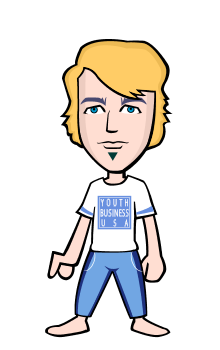Calm mind brings inner strength and self-confidence, so that's very important for good health.
-Dalai Lama -

Image credits: Jeeshoots via Pixabay
Whatever we do, we use our energy. To have it, we have to eat. But before food can be distributed and absorbed by the cells of the body, it must be changed first to a soluble material. The process of breaking up and dissolving the food so that it can be taken into the blood to be used by the body is called digestion. The organs that do the work of digestion make up the digestive system. It includes the mouth, esophagus, stomach, and the small and large intestine.
Where does the digestion begin? What helps make digestion possible? How does digestion happen?
Try to take a guava and bite a little bit.Take note of the teeth you used. Chew the small piece. What part of the teeth do you use?
Digestion begins in the mouth where the food is chewed and cut into small pieces. The teeth break down, chop, and grind the food so that it can be swallowed easily. Different teeth perform different functions in breaking down food.The incisors cut the food. The cuspids tear it. The molars grind and crush it. How do they do this? Look at the different shapes of the teeth. How are their shaped related to their functions?

Image credits: Ivanovgood via Pixabay
The saliva mixes with and wet the food. Saliva is a digestive juice which is secreted by the three pairs of salivary glands that empty into the mouth. It contains an enzyme, ptyalin, which acts on starches and changes them into sugar.
Wound Licking
A common belief is that saliva contained in the mouth has a natural disinfectants, which leads people to believe it is beneficial to "lick their wounds." Researchers at the University of Florida at Gainesville have discovered a protein caller nerve growth factor (NGF) in the saliva of mice. wounds doused with NGF healed twice as fast as untreated and unlicked wounds; therefore, saliva can help to heal wounds in some species. NGF has not been found in human saliva; however reseachers find human saliva contains such antibacterial agents as secretory IgA, lactoferrin, lysozyme and peroxidase. It has not been shon that human licking wounds disinfects them, but licking is likely to help clean the wound by removing larger contaminants such as dirt and may help to directly remove infective bodies by brushing them away. Therefore, licking would be a way of wiping off pathogens, useful if clean water is not available to the animal or person.
-Read more in this source: Wikipedia-
Can you swallow without tongue?
Take a bite of a biscuit. Can you swallow it as it is? What happens to your mouth? When it is easier to swallow, why?
The tongue is a strong muscle that helps the teeth as it mixes the saliva and the food. Then it turns the food so the teeth can break it up. When the food is finely cut up, the tongue then pushes it to the back of the mouth and into the throat.
While you drink the cold water or juice, put your hand on the front part of your neck. Feel the movement as you swallow the liquid. Feel the liquid going down through your throat. Why is this so?

Image credits: RyanMcGuire via Pixabay
When we swallow, the opening to our windpipe closes. If we talk while we absorb the food, it may get into the passage. This will cause us to choke and cough until the food particle gets out from our windpipe. The muscles of the esophagus move the food toward the stomach. This squeezing movement of muscles is called peristalsis.
With a cap on, squeeze the middle part of the toothpaste. Then squeeze both ends. Remove the cap. Now, still without the cap, do the first step. The movement of the toothpaste from its tube is similar to what happens to the food in our esophagus. The food is forced into the stomach by peristalsis.The stomach is a hollow muscular bag at the end of the esophagus. It is just above our waistline, on the left side. The part below of our waistline is our abdomen, not our stomach. Our stomach can stretch if we eat a big meal. Before eating, it can look like a sausage, after eating plenty of food, it can look like a football. Its inner walls are covered with glands that make gastric juice. The walls of the stomach tumble, shake, squeeze, and mix the food with the juice. This makes the food look like thick soup. Each day, about two liters of gastric is formed in the stomach.
Try to put one lump of sugar each in two separate bottles of water. Cover both bottles. Let one bottle stand still. Shake the other bottle steadily. In which bottle does sugar dissolve faster?
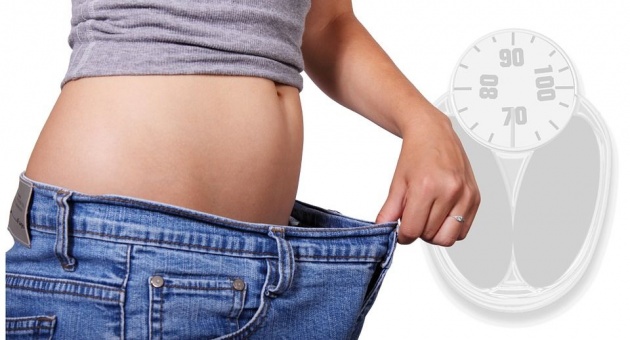
Image credits: Tumisu via Pixabay
The movement of water and sugar which you observed also happens in our stomach. It has tight muscles that can keep the food for six hours. Then, peristalsis moves the food little by little into the small intestine.The small intestine is a coiled tube about 6 meters long. If we were to lay it to straight, it would be four or five times the length of our body. It is connected to our stomach that is lined with muscles with peristalsis movement. Duodenum is the first part of the intestine. From its walls flow liquid substances. Bile flows into the intestines from the liver and juice from pancreas. Bile helps digest fatty foods. Pancreatic juice helps digest starches, proteins, and fats.The food becomes almost liquid inside. Nutrients in the food are absorbed by the body through the blood vessels along the intestinal walls.The walls of the small intestines are lined with villi. These look like tiny fingers. The villi separate the food nutrients ready to be absorbed by the walls from the food that is not ready yet. Through the villi, the food nutrients flow into the bloodstream which distributes them to the cells. When the oxygen cells joins with the food substance, energy is released. That is where we get our energy for work and play. What is left of the food is waste and goes to the large intestine or the colon. It is bigger and shorter than the small intestine. It is about one meter long. It almost surrounds the small intestine. It squeezes most of the water out of undigested food. The water passes through its walls carried by the blood to the different tissues. The undigested food becomes a soft solid called feces. It contains germs and gases. This is stored in the big intestine for 12 hours or more, then peristalsis pushes it out of the body through the rectum. This is the lowest end of the large intestine.
Courtesy of the video: Jessdholland via Youtube
The liver is the largest gland in the body that produces a bright yellow liquid called bile or gall. Bile is stored in a small sac called the gall bladder. Most of the water is removed from it, later on becomes dark, golden green. When the bile is released, it flows into the duodenum together with juices from the pancreas with the ability to break the fats into tiny droplets. The pancreas produces juices that digest sugars, starches, proteins, and fats. It also makes a substance called insulin. This helps control the use of sugar. If the body produces too much saccharine, the liver stores it for the future use.
Good Health Habits for Your Digestive System

Image credits: TheVirtualDenise via Pixabay
Eat a balanced diet
The food nutrients are grouped into three: the body-building group, the energy-giving group, and the body-regulating group. The body-building foods include fish, meat, chicken, eggs, nuts, and beans because they contain protein, niacin, calcium, vitamins A. They also contain phosphorus, vitamin D, riboflavin, and vitamin B12. Eat these energy giving foods specifically rice, corn, and other cereals. Maintain it daily to make sure that your body is getting all the food nutrients it needs. List down the foods you have eaten for breakfast, lunch, supper, and snacks to monitor the balanced diet you have. Write also the amount you have eaten. Compare your list with the daily minimum requirements table.
Eat regularly
Keep a regular time for meals-breakfast, lunch, and supper, with snacks in between. This will help your digestive system work more smoothly. It will also make you feel better. Have you tried not eating for a long time? How did you feel? Make a record of the time you eat breakfast, lunch, supper, and snacks for a week. Find out how regularly you eat your meals. Try to recall how you feel when you miss a meal.
Eat your breakfast
It is the most important meal of the day. Eat a full meal to keep you going the whole day and will make you work better. You will feel alive, too. Your breakfast should be taken care of at least one-fourth of your day's requirement of protein of body-building foods.
Researchers have found that on average, people who eat breakfast are thinner than those who don't. That could be because eating foods with protein and fiber in the morning keeps your appetite in check the rest of the day.
But it doesn't guarantee you'll fit into those skinny jeans. A recent study compared weight loss among people who ate breakfast with those with didn't. The meal didn't make any difference.
If your'e dieting, don't think cutting calories by skipping the meal will help. Studies show that most people who lose weight and keep the weight off eat breakfast everyday.
On the other hand, you need to pay attention to what, when, and how much you eat. One study showed that people who had large breakfasts ate more during the day.
Read more in this source: WebMD
Plan a breakfast menu
Think first of protein foods before adding the other foods. Supper should not be very heavy meal since you will be going to sleep afterwards.
Eat pleasantly

Image credits: RyanMcGuire via Pixabay
Your feelings affect digestion. When we are feeling bad and upset, our stomach may not secrete digestive juices. The digestion may be delayed. There may be times, too, when digestion happens faster because of upset emotions. Upset emotions may also make the stomach secrete too much acid. If this happens, part of the lining of the stomach or small intestine may be affected leads to an ulcer or wound may develop if this happens often.
Now ask yourself:
- What can you do to make eating pleasant?
- What pleasant things can you talk about during mealtimes?
- What topics should you avoid? What should you do if you have problems?
- Observe someone eating at the restaurant or even a member of the family at home. What are the topics talked about during mealtime? Should one who is angry or upset eat right away? Why?
- Try to make a list of pleasant topics you talk about during mealtimes.
Circulation of Nutrients
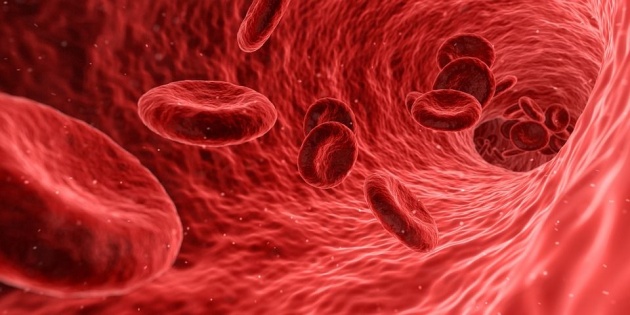
Image credits: Qimono via Pixabay
The food nutrients that flow into the bloodstream are distributed to all parts of our body through the circulatory system. Our circulatory system consist of blood, blood vessels, and heart. After the digested food has been absorbed, the blood carries it to all parts. Oxygen from the lungs is also carried by the blood. The movement of the blood as it distributes food and oxygen to the cells and removes waste materials from them is called circulation. We have about four liters blood. It is mostly made up of a clear, light yellow liquid called plasma. Plasma is about four-fifths water. It carried food substances hormones, antibodies, and waste materials. Floating in the plasma are three kinds of blood cells- the red corpuscles, the white corpuscles, and the blood platelets.The blood appears red because of the presence of a large number of red corpuscles or red blood cells. The chief function of the red corpuscles is to carry oxygen to the cells. The red corpuscles contain a substance called hemoglobin. Hemoglobin gives us our blood its red color. Our largest blood cells are the white corpuscles or the white blood cells. They are the soldiers of the body because they fight the germs that enter inside. This white corpuscles do not have fixed shapes. They resemble a microscopic animal called amoeba. Since the white corpuscles have the ability to destroy germs, they are considered as the standing army throughout our system.
Smallest blood cells are the platelets (little plates). They make our blood clot when we are wounded because it closes the wound and keeps blood from flowing out. Clots are made only when a tissue is broken. The blood carries the food nutrients to different parts of the body. The walls of the intestines are lined with tiny blood vessels. The liquid food is absorbed through the walls of the intestines into the blood vessels. As the blood flows through the body, each part gets the food it needs.
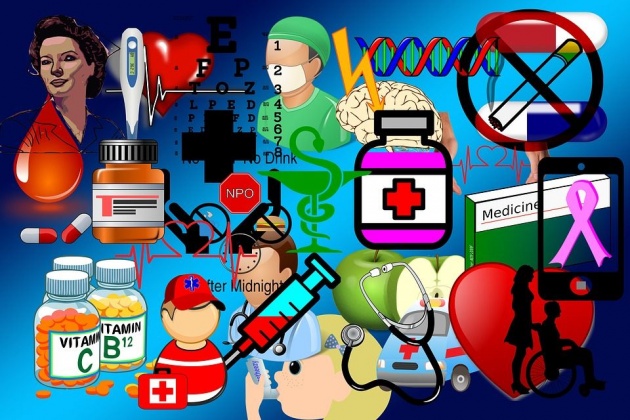
Image credits: Geralt via Pixabay
If you are near a Health or Red Cross Center (if you live in the Philippines), find out more about blood types. If possible, know your own or that of your family members.
The blood keeps moving in our body because there is a pumping machine that does this- our heart. Our heart is a hollow muscular organ located in the middle of the chest cavity with its apex pointing left about the size of our chest. Its wall is divided into two: the left and the right. Each side has an upper and lower part called chambers. The upper chamber is called the atrium (plural, atria) or auricle while the lower chamber is called ventricle. Our right ventricle pumps up blood to our lungs yet we call this side of the heart and lung pump because in the lungs, our blood gives off carbon dioxide and gets oxygen. The blood goes back to the heart that immediately enters left atrium and moves the left ventricle. The left ventricle pumps up blood with the oxygen to the different parts of our system. This is why we call it the left side of atrium then moves down to the right ventricle, following the same path again,. It takes less than a minute for a drop of blood to make a round trip through the body.
Feel your heart beat on the left side of your chest. Look at the location of the heart in your circulatory system picture. Is it on the left side of your chest?
There are three kinds of blood vessels" veins, arteries, and capillaries. From the heart, the blood is pushed into muscular tubes called arteries. Arteries carry blood away from our heart. The blood that leaves the heart is red because of the combination of the oxygen and the red blood cells. Arteries branch into thinner tubes called capillaries that reach into all parts of our body. They distribute food nutrients to the different cells. The capillaries join one another to form thicker tubes called veins. The veins carry blood toward our heart, immediately to the lungs, ready for the next trip. Since most of the oxygen has been left in different cells, the blood will be changing into a blue color.
How to See the Blue Blood?
- Hold your hand down.
- Look at the veins on the upper part of your hand. What color are they? Why?
- You can feel the blood as it pumps through your body. Now, place your finger tips (not your thumb) on your wrist where you can feel the beat of the moving blood. This is your pulse.
Why do our heart beat faster?
- Count your pulse beat for a full minute.
- Then jump 20 minutes.
- Count your pulse beat again. Record and compare the results before and after jumping.
- When we jump, our pulse beats faster because our body needs more food when it is doing active work.
Good Health Habits for For Our Circulatory System
There are several health habits we should learn to be in a good condition.
Eat a balanced diet
This is necessary to protect our heart and keep our circulatory system working properly. Too much fatty foods might overworks it. Interview people known to have heart ailments. Compare their dietary habits with those who keep their organ healthy.
Get enough sleep, rest, and exercise

Image credits: C_Scott via Pixabay
It is important to rest after a vigorous activity. Get enough sleep to give your heart time to rest, too.
Fight infection
When we are sick, our heart has to work harder to help our body fight infection. Certain infections are certainly bad for the organ. Germs can cause tonsillitis and sore throat may reach it that can cause a serious damage. Get a proper medical care when you are sick.
Avoid harmful substances. Many studies have shown that substances taken in by the body from tobaccos cause the blood vessels to shrink as blood cannot flow easily. It ceases the heart to work harder that damages in the walls of arteries and veins especially in legs and arms. Blood clots will follow that blocks the blood from flowing smoothly.
Every cigarette you smoke makes you more likely to get heart disease. Roughly 1 out of 5 deaths from heart disease is directly related to smoking.
People who smoke is also bad for people around you. Secondhand smoke can cause heart disease and lung cancer in people who don't smoke.
-Read more in this source: WebMD-
Courtesy of the video: Nucleus Medical Media via Youtube
Be mentally and emotionally healthy
Good mental and emotional health is good for the heart. Tensions, worries, and upset feelings make the organ work faster. How does your heart beat when you are afraid? when you are angry?
Avoid extreme emotions
Live a normal healthy life and good body health will follow.
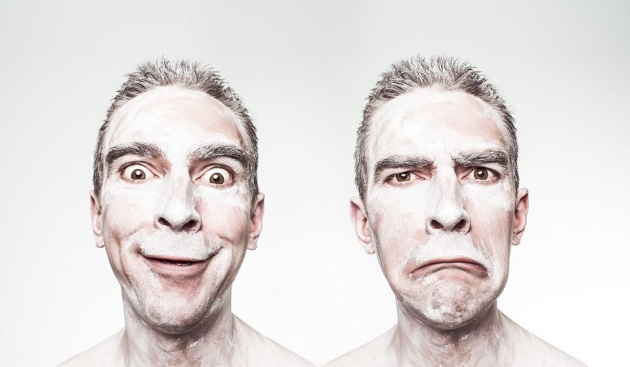
Live a normal healthy life and good body health will follow. (Image credits: RyanMcGuire via Pixabay)
Do this task:
Keep a record of the time you spend for your daily activities during the week including sleep, rest, and exercise and analyze which activities are vigorous, which ones are restful. Compare the time spent for each activity.
----------------------------------------------------------------------------
All rights reserved 2019. No part of this article
may be reproduced without special credits in writing from the publishers
of WebMD.com, as well as borrowing images from Pixabay.com.

